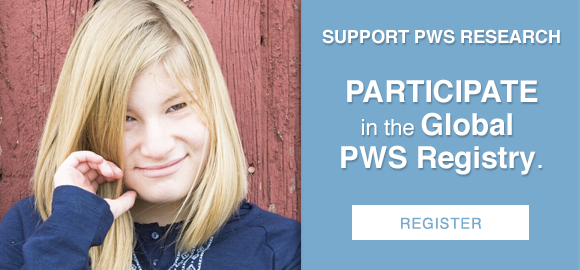It is well accepted that self injurious skin picking is a major struggle among those with PWS, and is an upsetting challenge for parents and caregivers as well. However, there are few studies in this area and statistics are lacking regarding the frequency, severity, cause, and effective therapies. Importantly, the results from a 2011 FPWR funded project examining skin picking were recently published in the journal “Research in Developmental Disabilities”. The article is from Dr. Scott Hall’s research group at Stanford University and is titled “An analysis of the topography, severity, potential sources of reinforcement, and treatments utilized for skin picking in Prader-Willi syndrome”.
Characteristics: Dr. Hall’s group characterized skin picking among 55 PWS individuals, ages 6-25 years old. Results showed that 87.3% of the participants had active injuries, meaning a break in the skin as a result of scratching, biting, rubbing, puncture, etc., with an average of 5-8 injuries per subject. Injuries were primarily focused on the extremities (e.g. arms, legs, hands, feet) and the head area (e.g. scalp, face, ears, neck), presumably because these are the areas of easiest access.
Causes: In terms of seeking out effective prevention and treatment, it is critical to understand the underlying triggers and causes of self-injurious skin picking in PWS. Through interviewing caregivers, the investigators report that the two major triggers for skin picking in this study group were automatic (or self inflicted) sensory stimulation (~50% of participants), and wanting attention or some preferred item or activity (~35% of participants). Escaping from an undesired task or activity, and automatic (or self inflicted) escape from some other physical pain were much less prevalent causes of the behavior, ~11% and 2%, respectively. These results are consistent with previous studies regarding the localization and severity of skin picking injuries. Previous studies have shown that those individual with DEL may be more prone to picking that UPD (90% versus 70%). Although this may be the case, this report importantly demonstrates that for those who do pick, there are no significant differences between UPD and DEL for any of the parameters tested.
Therapies: See update below. Many caregivers reported using a combination of multiple therapies with approximately half using some form of behavioral therapy and first aid. Behavioral treatments included, but were not limited to, goal-setting, enrichment, reprimand, and redirection. The next most common strategy (~25% of participants) was the use of medications including including N-acetylcysteine (NAC), an over the counter medication and Depakote, as well as others. Note that anecdotally, it’s important to use NAC that is non-reduced (one such source being PharmaNAC). Sensory strategies such as massage, chewing gum, or ice cubes were only used by ~16% of participants. It is important to note that the investigators only reported on the uses of therapies in this study with no analysis of the effectiveness of the various treatments.
Moving Forward: At present, the most common treatment for skin picking in PWS is behavioral therapy. Additional research is needed exploring the underlying mechanism for the automatic/self-inflicted sensory stimulation which seems to be at the root of much skin picking. In addition, comprehensive double-blinded studies examining the effectiveness of medications in treating skin picking in PWS are much needed.
!UPDATE Dec 2013! A newly published report from University of Florida examined the effectiveness of Pharma-Nac for the treatment of skin-picking in PWS (Miller and Angulo, 2013). The use of Pharma-Nac for treating skin-picking is based on research showing that one of the contributing factors to obessive-compulsive behaviors is disregulation of the glutamate pathway. Glutamate is a neurotransmitter that works by activating NMDA glutamate receptors and Pharma-Nac may restore balance to this important pathway. The current study included 35 individuals with PWS (ages 5-39) who had consistently displayed skin-picking for at least 1 year. The frequency and severity of skin-picking lesions and behavior was assessed before and after 12 weeks of oral NAC treatment. All 35 individuals experienced a significant improvement skin-picking behavior, with complete resolution of skin-picking in more than 70% of patients, and minimal side effects of gastrointestinal upset in 2 patients. These are very promising results and strongly support the need for longer, placebo-controlled studies to help develop recommendations on the use of NAC as a treatment for skin picking PWS. Although available over the counter, as always, please consult with a physician before starting any new medication.








